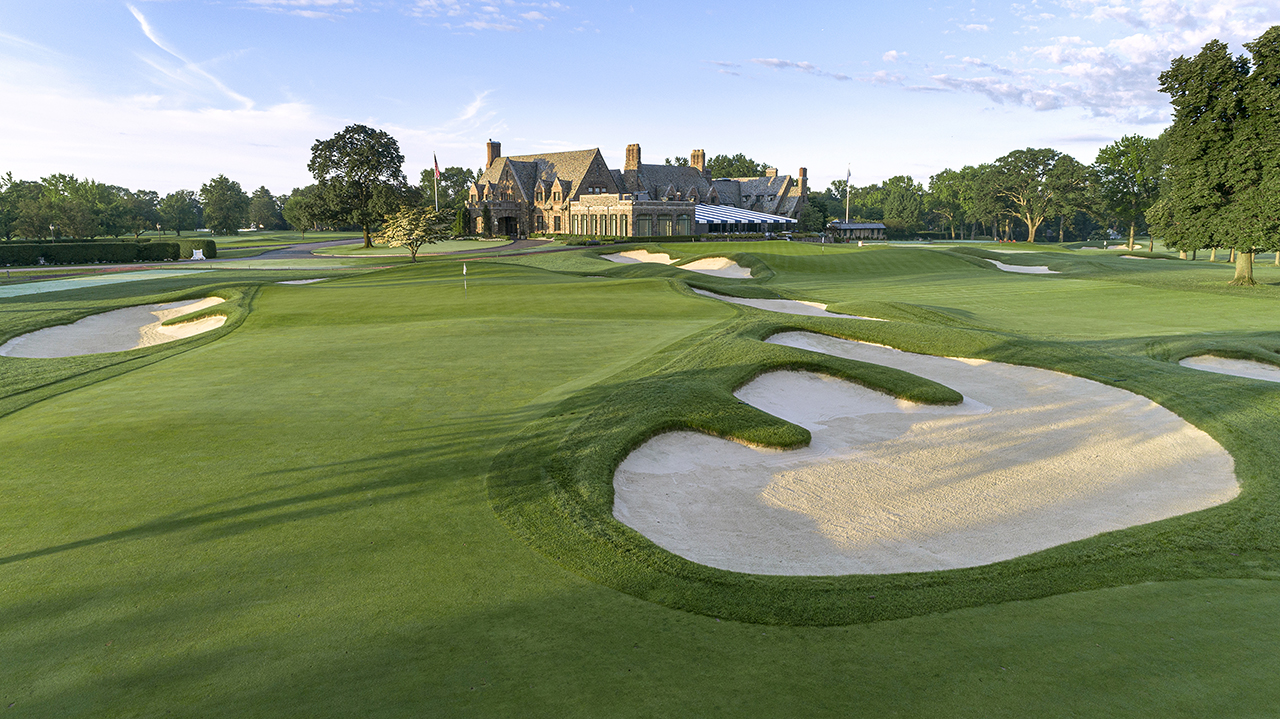
The Early Years
A.W. Tillinghast was born in May of 1876 to a well-to-do rubber making family in the Philadelphia area. His reputation does not resound as loudly when compared to a Donald Ross or Dr. Alister MacKenzie but it is certainly in the same category of influence in regard to golf course architecture.
Like many other great players and course designers of the same generation, Tillinghast spent time in Scotland improving his game and broadening his knowledge of the game. Tillinghast made the acquaintance of ‘Old’ Tom Morris, reportedly having the opportunity to play with him on his visit in 1896. In the early 1900’s, prior to his career as a course designer, he was one of the most well-respected golf writers in the country. He wrote for the then successful Golf Illustrated which was one of the top golf publications of the time. Unfortunately, like so many other businesses, ‘The Great Depression’ led to the ultimate demise of Golf Illustrated.

A Rise & Fall
A.W. Tillinghasts’ career as a golf course architect began with his first course, Shawnee Country Club in 1911. Business boomed over the next 20 years with Tillinghast earning a fortune in design fees, around $1M, equating to $15.6M today. Unfortunately, ‘The Great Depression’ saw much of the design work dry up along with his financial gains as well. Once ‘The Great Depression’ ended in 1933, he took a job with the PGA of America as a consulting architect in 1935.
Over the course of his career, Tillinghast touched some 265 golf courses. Little was known about Tillinghast until 1974 when Frank Hannigan, a writer for ‘The Golf Journal’ noticed four of the ten USGA Championships that season were being held at Tillinghast courses. Hannigan proceeded to write one of the most prolific, historical pieces to this day on Tillinghast called ‘Golf’s Forgotten Genius’ for the May 1974 edition of ‘The Golf Journal’.
Tillinghast Design Features
Tillinghast believed no holes or course should feel or look the same and he was a master of creating a layout for the land he was given, there are however design elements which he preferred to others. First and foremost, he proclaimed the ‘one-shot hole’ or par 3s were the keystone of his designs, saying…
“The course stands or falls through the character of its one-shot holes”
– A.W. Tillinghast
His landing zones from the tee were wide, however one side provided a more favorable approach to the green. He pioneered the double dogleg on long par 5s and was the creator of the ‘Great Hazard’ for par 5s as well. The ‘Great Hazard’ replaced a water hazard in a sense that it required a forced carry, typically the second shot, over a large expanse of bunkers placed directly in the line of play. This feature is best on display in his design work at Pine Valley, Bethpage Black, and Philadelphia Cricket Club. His green complexes were often small, tightly bunkered, with a slanted and fast putting surface. With time, the severity of his green designs drew the occasional criticism, however given his skill with the putter himself it is no surprise Tillinghast was in favor of more challenging putting surfaces.

A Lasting Legacy
A.W. Tillinghast is among the group of just six golf course architects inducted into the World Golf Hall of Fame for the Lifetime Achievement award, himself being the most recent induction in 2015. I will leave this article with a quote from Tillinghast himself, summing up his thoughts on 18 holes in the simplest way possible. From ‘Golf’s Forgotten Genius’ by Frank Hannigan.
“A round of golf should present 18 inspirations – not necessarily thrills, because spectacular holes may be sadly overdone. Every hole may be constructed to provide charm without being intrusive with it.”
– A.W. Tillinghast
World Top 100 Golf Courses
- 31st – Winged Foot Golf Club (West), Mamaroneck, NY, USA
- 35th – San Francisco Golf Club, San Francisco, CA, USA
- 50th – Somerset Hills Country Club, Bernardsville, NJ, USA
- 57th – Bethpage State Park (Black), Farmingdale, NY, USA
References
- www.golf.com (Everything you need to know about Hall of Fame architect A.W. Tillinghast)
- www.top100golfcourses.com
- www.wikipedia.org
- www.linksmagazine.com (The Essentials A.W. Tillinghast)
- www.thefriedegg.com (A.W. Tillinghast: The creator of championship tests)
- The Golf Journal, May Edition, 1974, Golf’s Forgotten Genius – Frank Hannigan
